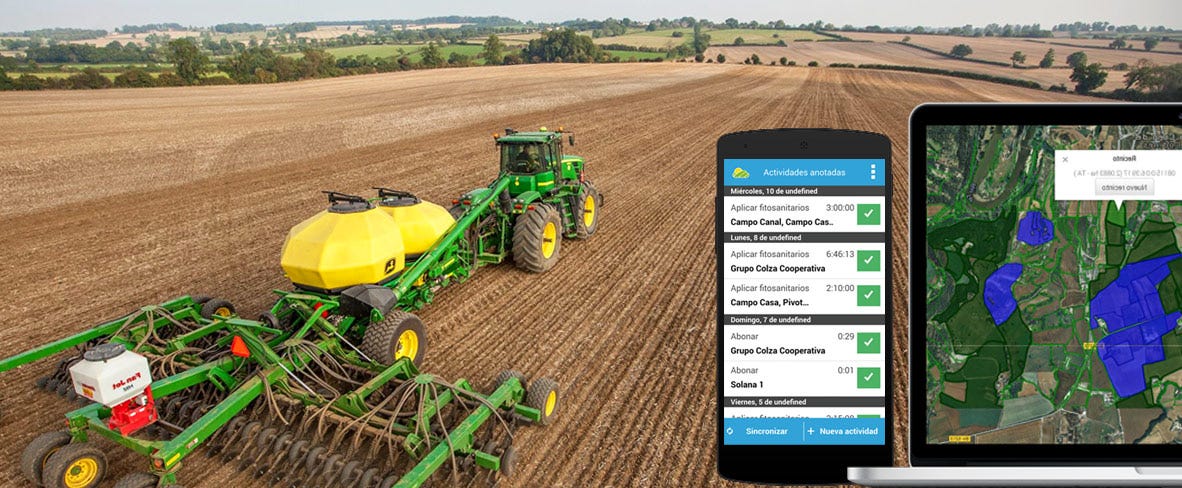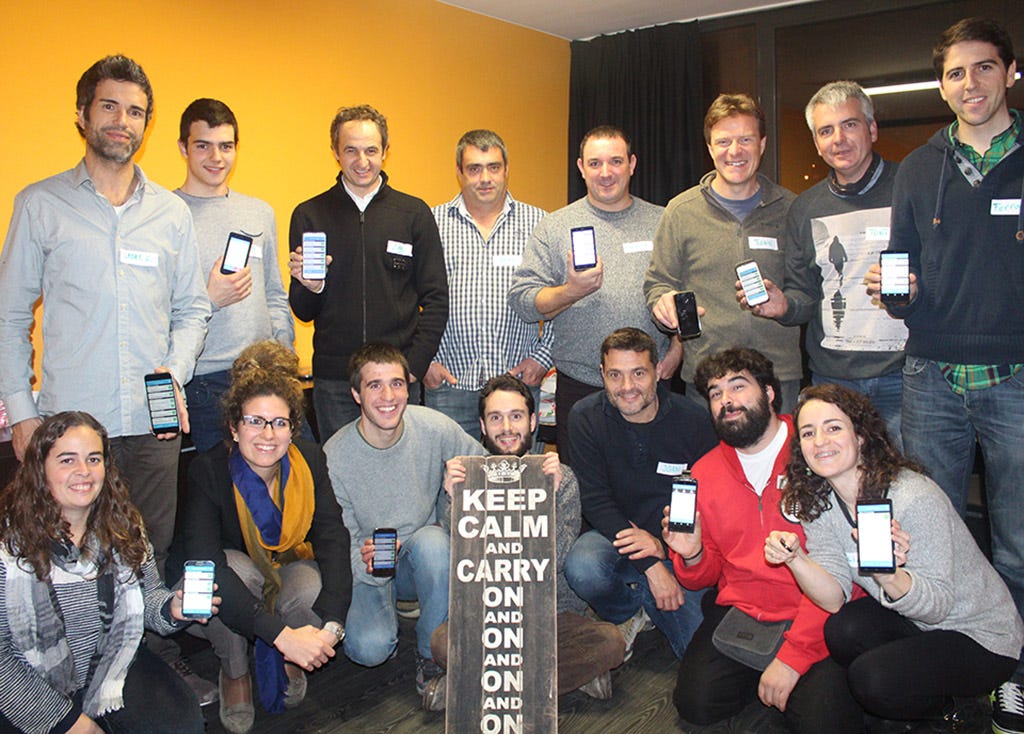Although technology arrived later to agriculture than to other industries, the fields are catching up. In recent years, more startups and venture capitalists have set their sights on this ancient industry, and innovation is already changing the rules of the game for farmers. Fact is that agriculture is one of the biggest markets in the world and all the agricultural process clearly have a big margin to benefit from data science, wireless technologies and software in the cloud.
In Spain, one of the startups that is already providing solutions to manage the daily life of a farm without farmers having to step off the tractor is Agroptima.
To know a bit more about this startup and how the agricultural industry is being disrupted with new software tools we have interviewed Emilia Vila, co-founder and CEO at Agroptima.
itnig: Hi Emilia! You have experience launching different startups in different industries. Why did you decided to startup in agriculture with Agroptima?
Emilia: In a previous start-up (Delizr.de) my co-founder and me talked to farmers very often. We realised how frustrated they were when it came to optimize their crops and analyze their performance. They had poor software tools and no data.
We also saw an increasing amount of data coming from IoT devices: drones, sensors and machines. We realised we could build the Google Analytics for farmers. And that is what Agroptima is, short and sweet 🙂
We were also super motivated to have the chance to revolutionize a vast industry, which faces so many challenges in this century. For example, do you know how we will feed the world by 2050? We will have to increase food production by 70%. With Agroptima we know we can have a great impact in this world and that motivates us everyday.
i: In your opinion, and although the market is big enough, why agriculture has not been attractive to entrepreneurs as fast as other industries?
E: I think it is because most of the entrepreneurs come from the urban world and they focus on solving problems they encounter or products they want to use.
i: You say that Agroptima’s goal is “to dramatically increase agriculture competitiveness through new technologies”. How are you achieving this goal?
E: We are achieving this goal by focusing on the farmer. We are not focusing on intermediaries or other people. We believe that farmers are the key piece to revolutionize agriculture and we are providing them with the right tools.
The first version of Agroptima is already in the market and it is already helping farmers optimize their farms, save time, paper and easily comply with the law. The current version of Agroptima is a mobile app and webapp that allows farmers to keep track of their activities and manage their entire farm resources. This simple tool allows them to get rid of paper and to start gathering data that can be used to make better decisions on crop rotations, plantations or usage of specific products like herbicides, fertilizers, etc.

i: You started Agroptima on February 2014 and launched the beta of your product in September 2014. What happened during that period of time? Could you recall the main steps of the process of creating your product?
E: We have built a team integrated by engineers and a group of farmers. These 6 farmers are very modern, tech friendly and have experience using farm software in the past. We listened to their needs and essentially made the best product upon them. Co-creation is the key.
Before launching Agroptima, farmers tested it in the fields. We scaled step by step with batches of new farmers and finally now Agroptima is already available to anyone and more and more farmers are using it to optimize their farms every day.
i: Farming is mostly dominated by men. How do they handle the fact that the boss of Agroptima is a woman?
E: You are right, actually, farming is mostly dominated by men as it is a hard physical job. However, I am lucky that our community of farmers is very professional and I have never experienced an uncomfortable situation due to gender differences.
i: How about your team? Your co-founders are Ferran Gascon (CTO) and Anisia Tardà (Agricultural Engineer). Did you knew each other before Agroptima or how did you came up to start a business together?
E: I started Delizr.de with Ferran, an online gourmet marketplace, and I have worked with him for a long time. During this experience is where we identified the opportunity of Agroptima.
Meeting Anisia came later thanks to a contact we had in common. We shared a common goal: to bring tech to agriculture and to help farmers be more efficient. When you are so passionate about a common goal, the connection is very strong. In our case, we formed the perfect team (tech, agrotech, business) and we had a great opportunity in front, so we just seized it!

Agroptima’s Team + the farmers (beta testers).
i: As far as I know, you haven’t closed any funding round yet. How have you financially survived until now?
E: We have raised funds thanks to the 9 innovation contests that we have won all around Europe and we have chipped in personal savings.
i: Are you planning to open a funding round in the near future?
E: Yes, we are now actively looking for smart money to help us revolutionize agriculture faster.
i: What is your long term vision for Agroptima and what are your next steps?
E: Our next step is to laser focus on improving what we have and to connect with the farming community. Our long term vision, is to achieve the “interconnected farm” where all the elements and devices are connected and the farmer can manage and optimize the farm from Agroptima.
i: In your opinion, what is the future of agriculture? Will it become a hyper-technified sector with field’s evolution being supervised by drones?
E: For us, the future of agriculture is the involvement of the farmer in technology. Therefore we focus on providing the best technology to the farmer (not intermediaries, advisors, etc.).
We are hyped everyday by new gadgets, sensors, robots, drones… Those technologies will be successful as long as farmers want to use them, as long as they are solving an important pain. If that’s the case, I am sure they will help shape the future of agriculture.
There is no doubt farming activities will have a higher degree of automation and therefore big data, drones and internet of things can be key to provide the inputs necessary to make this possible.
